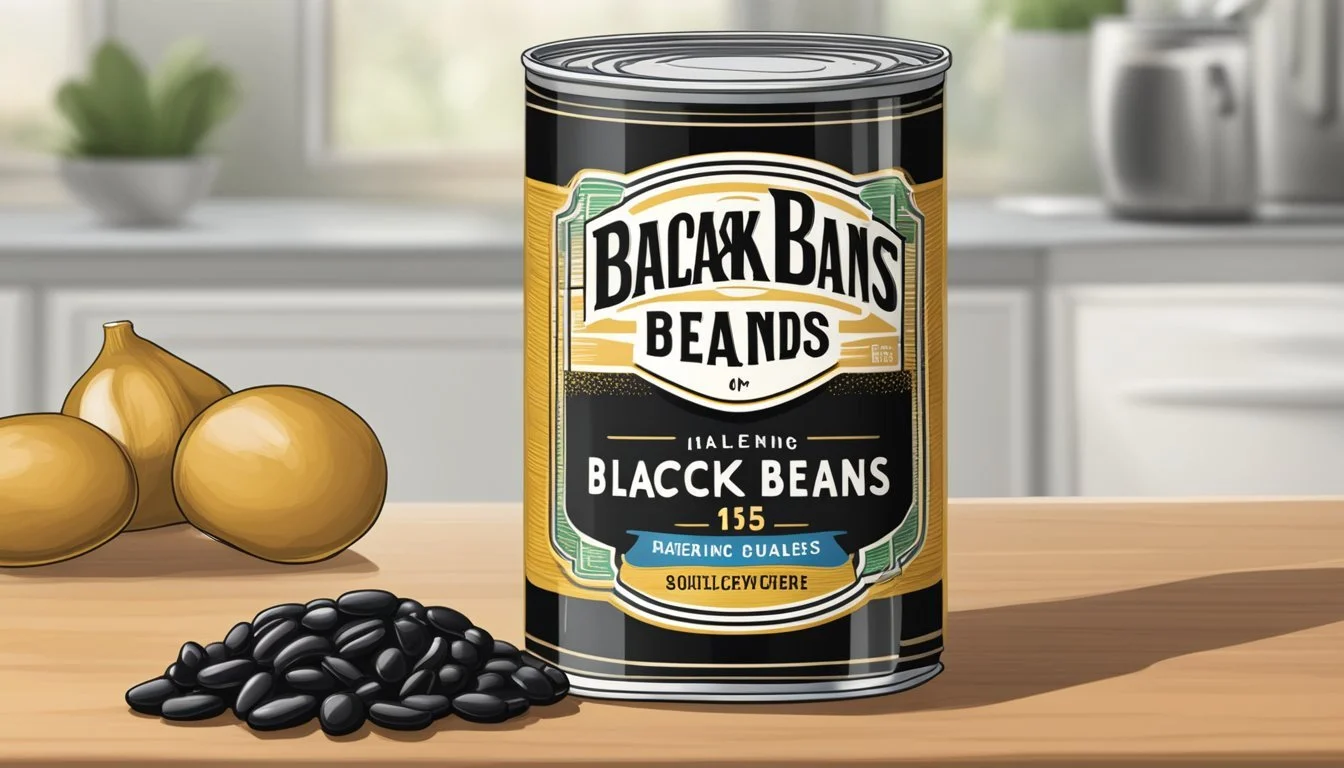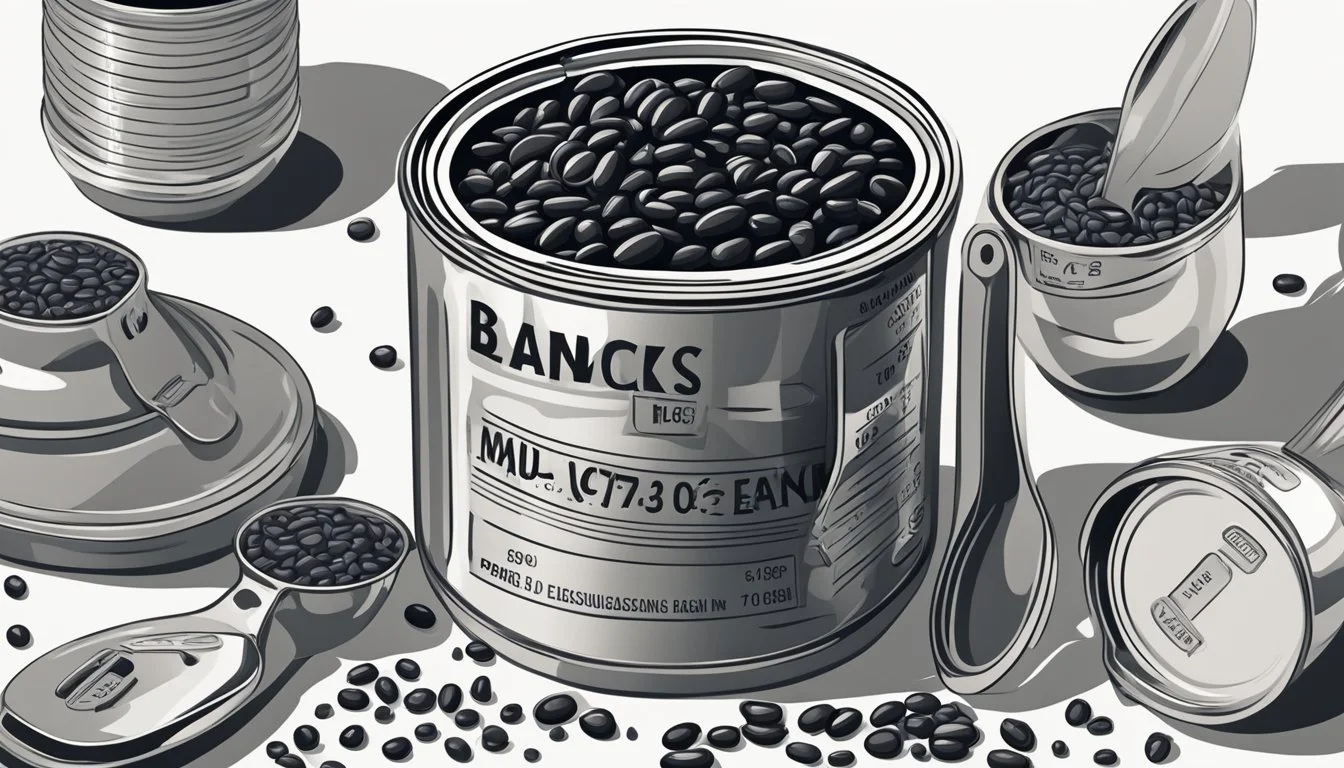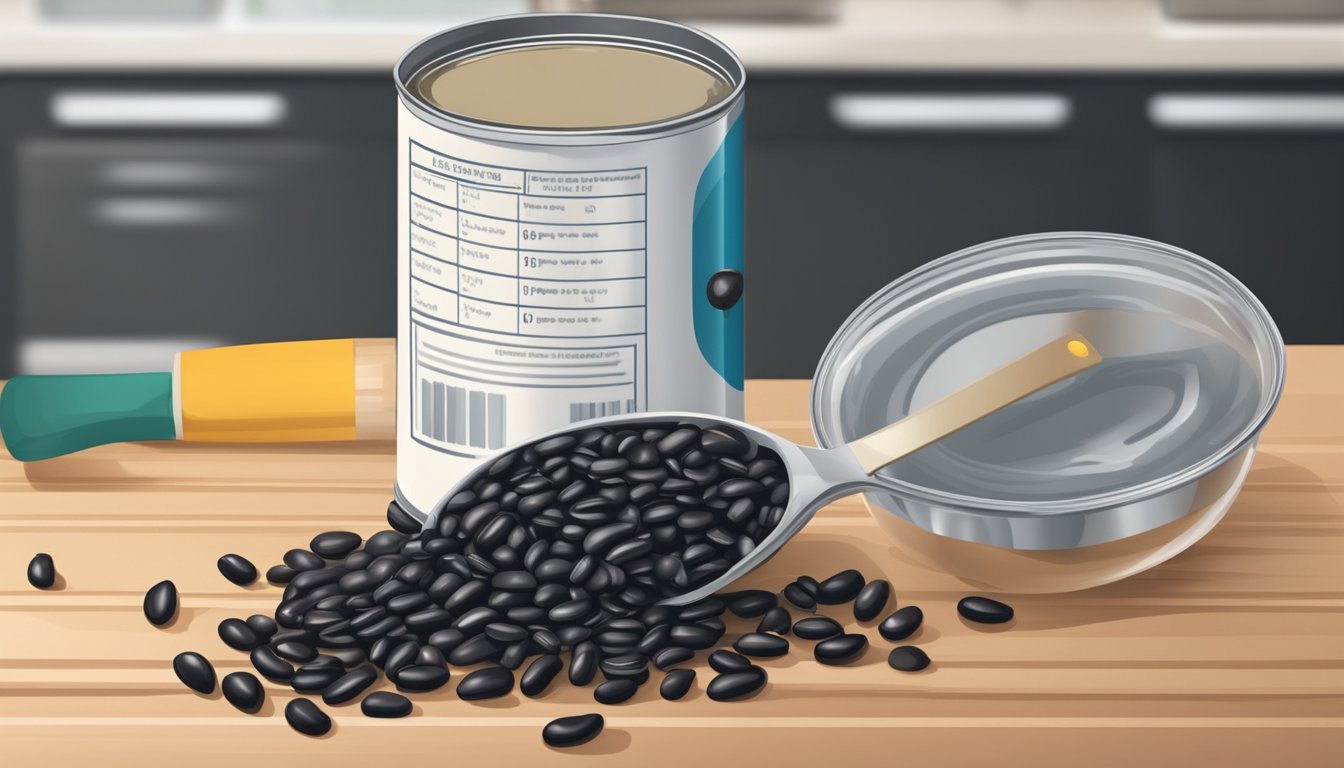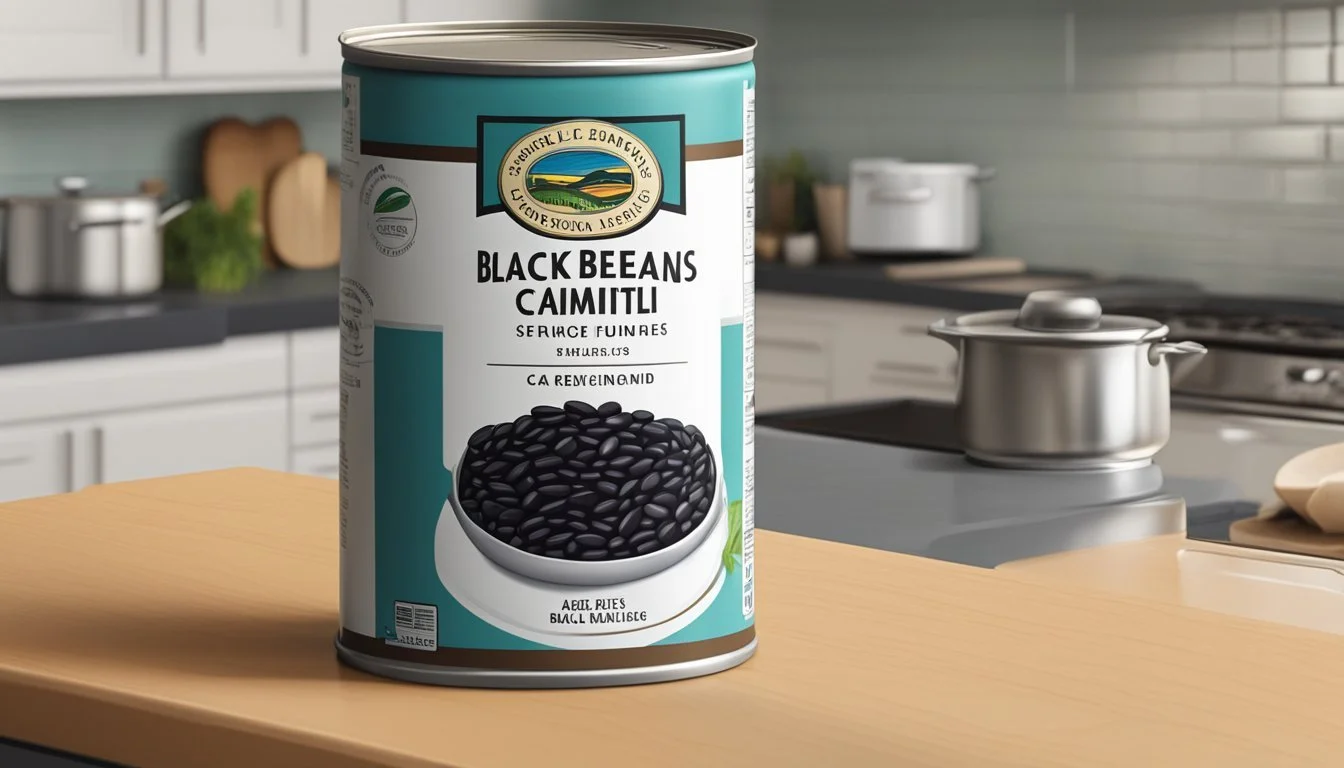How Many Ounces in a Can of Black Beans
Standard Sizes and Measurement Guide
When purchasing black beans, consumers often find them available in cans, which provide a convenient and ready-to-use ingredient for various recipes. The standard size for a can of black beans is 15 ounces, with the contents typically weighing around 10 ounces once the liquid is drained. This drained weight equates to just over 1 cup of beans, making canned black beans a quick alternative to soaking and cooking dried beans.
The conversion from dried black beans to their canned counterparts is helpful for those who might need to substitute one form for another in cooking. One cup of dried black beans generally yields about 2 to 3 cups of cooked beans. This means that approximately 1/2 cup of dried beans can substitute for one 15-ounce can of cooked black beans when recipes call for it. Understanding these conversions can assist home cooks in accurately adjusting their recipes according to what's available in their pantry.
Canned black beans are a versatile ingredient used in a variety of culinary traditions. Whether it's incorporated into soups, salads, burritos, or brownies, knowing the weight and the equivalent measures of canned black beans facilitates recipe adaptations and helps maintain the desired texture and flavor balance in dishes. For committed home chefs and casual cooks alike, having an understanding of these measurements ensures successful meal preparation.
Understanding Can Sizes
When discussing can sizes, particularly for black beans, it's essential to understand the two main aspects: the physical dimensions of the can and the volume-weight relationship of its contents.
Standard Can Dimensions
In the United States, the industry standard for a can of black beans is typically 15 ounces. This size correlates to a No. 300 can, which is generally about 3 3/16 inches in diameter and 4 3/16 inches in height. The dimension markings on cans, such as 303 x 406, indicate the can is 3 3/16 inches in diameter and 4 6/16 inches (or 4 3/8 inches) tall. These dimensions ensure consistency in recipes and pantry storage.
Volume and Weight Variations
A standard 15-ounce can of black beans is expected to hold approximately 1.5 to 2 cups of beans, which is a crucial measurement for cooking and recipe adjustments. Although the physical can dimensions are relatively consistent, the filled weight can vary slightly due to the density of the contents and any added liquids.
Can Size Name Volume Weight Standard (No. 300) About 1 ¾ cups 14 to 16 ounces 15-ounce can About 1.5 to 2 cups 15 ounces
This table serves as a quick reference to understand the typical volume and weight you can expect from a standard can of black beans.
Nutritional Profile of Canned Black Beans
Canned black beans are a nutritious staple, offering a rich source of protein and fiber while being low in fat. They vary in sodium content, with options available in no-salt-added or low-sodium varieties to suit health-conscious diets.
Protein Content
Canned black beans provide a substantial amount of protein, an essential nutrient for muscle repair and growth. A typical serving of 1 cup (approximately 260 grams) contains around 15 grams of protein, making them a valuable plant-based protein source for vegetarians and vegans alike.
Fiber Content
The fiber content in canned black beans is notable for its digestive health benefits. One cup of canned black beans can contain up to 15 grams of dietary fiber, which is more than half of the daily recommended intake for adults. This high fiber content helps to maintain bowel health, lower cholesterol levels, and aid in weight management.
Sodium Content
The sodium content in canned black beans can vary widely. Traditional canned black beans contain about 400-500 milligrams of sodium per cup, which is a significant portion of the recommended daily limit. However, low-sodium and no-salt-added varieties are available, providing as little as 15 milligrams of sodium per cup, which is a healthier choice for those monitoring their sodium intake for cardiovascular health.
Preparation and Cooking Techniques
Proper preparation of black beans maximizes their flavor and texture. Whether using canned beans for immediate use or dried beans for a more involved cooking process, each method requires specific steps to ensure the best results.
Draining and Rinsing
When it comes to canned black beans, they typically contain a starchy and salty liquid. To prepare these for a recipe, one should drain the excess liquid and rinse the beans in a colander under cold water to remove this liquid. This step not only reduces the sodium content, which is important for health considerations, but also prevents the muddying of flavors in the final dish.
Open the can with a can opener.
Empty into a colander.
Rinse with cold water for 30 seconds.
Soaking and Cooking Dried Beans
Dried beans require a longer process that begins with soaking and ends with cooking. Soaking dried beans overnight reduces cooking time and helps to achieve a consistent texture. For every cup of dried beans, one can expect about 2 to 3 cups of cooked beans. Post-soak, beans are then drained and transferred to a pot, covered with fresh water, and cooked until tender. Meanwhile, to freeze soaked but not cooked beans, they should be drained and laid out on a baking sheet to freeze before transferring to a freezer bag.
Soaking
Measure the desired amount of dried beans.
Cover with water by 2 inches in a large bowl.
Allow to soak for 8 to 12 hours or overnight.
Drain and rinse the soaked beans.
Cooking
Place soaked beans in a large pot.
Cover with fresh water by several inches.
Bring to a boil, then reduce the heat and simmer.
Cook until the beans are tender, which can take from 1 to 3 hours.
For those using dried black beans, it is important to note that these preparation steps are crucial for both texture and digestive comfort.
Serving Suggestions and Recipes
A can of black beans, typically 15 ounces, is a versatile ingredient that can transform into numerous dishes. Recipes range from simple sides to complex mains, offering nutritional value and a satisfying taste.
Incorporating Beans into Meals
Beans serve as a staple in vegetarian and meat-based dishes due to their high protein content. For a hearty chili recipe, one can mix black beans with tomatoes, ground beef or turkey, and a blend of spices, cooking until the flavors meld. Black beans can also elevate tacos or burritos, adding both texture and substance; simply warm the beans and include them as a filling alongside rice, vegetables, and your choice of protein.
Quick and easy meals benefit from black beans as well. They can be stirred into soups for added depth or used in bean recipes like black bean soup with cumin and coriander. Meal prep enthusiasts may appreciate black bean veggie burgers, which can be made in batches and stored for later use.
Bean Salads and Sides
Black beans can be the backbone of various salads and side dishes. For a refreshing bean salad, mix black beans with corn, diced tomatoes, chopped onions, and a cilantro-lime dressing. This combination is both colorful and flavorful, making it an ideal side dish or a light standalone meal.
Creating a salad by tossing black beans with quinoa, peppers, and a vinaigrette makes for a nutritious and fulfilling option that works well for both sit-down dinners and quick and easy meals. Black beans also pair well with sweet potatoes, creating a side that's satisfying and rich in nutrients.
Substitutes and Varieties of Beans
When it comes to using beans in recipes, both the taste and texture are important factors to consider. The array of bean varieties and their potential substitutes offer various flavors and consistencies that could either complement or alter the intended outcome of a dish.
Comparable Beans for Substitution
When a recipe calls for black beans, often known as turtle beans, and none are available, one may consider other types that share similar robust flavors and firm textures. Here are alternatives that maintain the integrity of most recipes:
Kidney beans: Red and darker in color, they have a comparable size and hearty flavor.
Pinto beans: With a slightly milder taste but similar earthiness, these work well, especially in Mexican cuisine.
Chickpeas (garbanzo beans): Offer a firmer texture; ideal for salads and stews.
Great Northern beans: Milder in taste but can mimic the texture of black beans.
Choosing the Right Type for Recipes
The type of bean picked as a substitute will affect both the flavor and the overall texture in a recipe. Consider the following guidelines for choosing the correct variant:
Type of Bean Mostly Suited for Flavor Profile Texture Kidney beans Chili, stews Rich, full-bodied Dense, holds shape well Pinto beans Refried beans, soups Earthy, nutty Creamy Lima beans Succotash, soups Buttery Soft, creamy Navy beans Baked beans, soups Mild Smooth, creamy Lentils Dals, salads Peppery Soft or firm depending on cooking Soybeans Asian dishes, soy products Nutty, sweet Varied textures; often processed
In addition to taste and texture, one must also consider the cooking time and type of bean used to ensure the substitute beans achieve the desired tenderness without disrupting the dish's overall cooking time.
Practical Tips and Storage
When it comes to black beans, consumers should pay attention to storage methods to maintain their quality and maximize shelf life. Proper storage of canned black beans can also lead to better cost-effectiveness for this pantry staple.
Shelf Life and Expiration
Canned Black Beans: Typically, a sealed can of black beans has a shelf life of 2 to 5 years from the production date. However, for the best quality, one should consume them before the "best by" date printed on the can. After opening, black beans should be used within 3-4 days if refrigerated in a covered glass or plastic container.
Storage Tips:
Unopened cans: Store in a cool, dry place such as a pantry.
Opened beans: Refrigerate promptly in a covered, non-metallic container.
Storing Leftover Beans
Once a can of black beans is opened, the leftovers should be transferred to an airtight container and refrigerated immediately to prevent spoilage. Leftovers can also be frozen for up to 6 months.
Freezing Steps:
Rinse and drain beans.
Spread on a baking sheet to dry slightly.
Portion into freezer bags, removing excess air.
Label bags with the date.
Cost and Budget Considerations
Price per Can: The cost of canned black beans can vary widely based on the brand and quantity, with prices typically ranging between $0.50 to $2 per can in most grocery stores.
Budget Tips:
Buying in bulk can often reduce the cost per can.
Store brands may offer similar quality at a lower price point.
Look for sales or use coupons to stock up on black beans at a lower cost.
Health Considerations and Dietary Relevance
Canned black beans are pertinent to health discussions, particularly concerning their protein, fiber, and sodium content. They serve as a vital component in various diets, especially for those seeking plant-based protein sources.
Beans in Plant-Based Diets
Black beans are a staple in plant-based diets due to their high protein and fiber content. A single can typically contains around 15 ounces before draining, equating to approximately 9 ounces of beans, which deliver substantial nutritional value for vegetarians and vegans. They are rich in plant-based protein, which is crucial for those who do not consume animal products.
Protein: Essential for muscle repair and growth
Fiber: Aids in digestion and can help lower cholesterol levels
For individuals following a vegetarian or vegan diet, black beans not only contribute to their intake of protein but also provide other nutritional benefits. They offer various minerals and vitamins, reinforcing their dietary importance.
Considering Allergies and Digestive Factors
While black beans are generally considered beneficial for health, consumers should be aware of potential allergies and digestive sensitivities. Beans contain oligosaccharides, a type of sugar molecule that can cause digestive upset for some individuals. Soaking and rinsing canned beans can lessen these effects.
When it comes to sodium, canned black beans can contain added salt, impacting those monitoring their sodium intake. It's advised to choose low-sodium options or to thoroughly rinse the beans to remove some of the added salt.
Allergies: Rare but possible, and should be treated with caution
Digestive Sensitivities: Rinsing can help remove oligosaccharides that may cause gas or bloating
Black beans are typically well-tolerated and contribute positively to a balanced diet, but individual tolerances should always be considered to maximize their health benefits.








